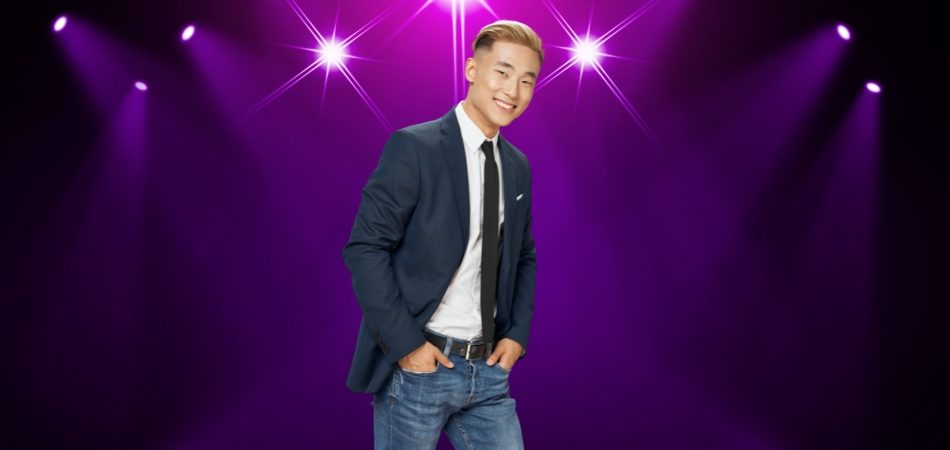If you’re preparing for an event as important as a conference, finding the right professional attire can be a minefield. However, most people wonder: Can you wear dark jeans to a conference?
Well, the answer isn’t as straightforward as yes or no. While our daily work environments have progressively adopted more casual dress codes, conferences often adhere to their unique standards.
Dark jeans might be considered acceptable in some cases, especially if you’re a student or if the conference dress code is more relaxed. However, the general rule of thumb is to err on caution.
When in doubt, opting for formal pants like slacks is advisable. After all, making a professional first impression can be pivotal for networking and career advancement.
General Rules and Regulations for Conference?
A seamless and productive conference experience is ensured by adhering to the nuances of conference etiquette. These unspoken norms provide clarity, promoting a professional environment. Below are some of the fundamental rules and regulations attendees should adhere to:
- Dress Appropriately: Dress codes vary, but it’s always safe to lean towards professional attire. Dark jeans may be acceptable in some settings, but slacks are often preferred.
- Punctuality is Key: Arriving on time displays respect for the event and its participants. Missing the start can disrupt proceedings and disturb other attendees.
- Maintain Decorum: Conferences are professional settings, so ensure your behaviour matches. Avoid disruptions and keep conversations pertinent to the topic.
- Respect Privacy: Not all information shared is for public dissemination. Always ask permission before sharing or recording details outside the conference.
- Engage Actively: Participate by asking relevant questions and joining discussions. It enhances the experience for both you and other attendees.
- Stay Updated: Check the conference schedule and updates regularly. It ensures you attend essential sessions or announcements.
- Limit Technology Use: While laptops and phones can be essential, ensure they don’t become a distraction. Use them judiciously and ensure they’re on silent mode.
- Network Politely: While conferences are great for networking, approach others respectfully. Ensure you’re not intruding or making someone uncomfortable.
- Dispose of Waste: If you bring in any food or drinks, ensure you dispose of your trash properly. Leave the area as clean as when you arrived.
- Provide Feedback: Most organizers appreciate feedback post-event. Share your insights or suggestions to help improve future conferences.
By adhering to these guidelines, you’re ensuring a fruitful experience for yourself and contributing to the event’s success.
Can You Wear Dark Jeans to a Conference?
When you’re going to a professional event, you should find a middle ground between feeling comfortable and looking sharp. One common question that pops up is whether it’s okay to wear dark jeans. Here are the factors to consider when choosing this attire.

For casual settings or student-focused events, dark jeans might find acceptance. They can look polished, especially with a bright top or blazer. Still, it’s essential to gauge the event’s atmosphere beforehand.
On the flip side, traditional formal wear remains the gold standard for high-profile business gatherings. Slacks or tailored pants send a clear message of professionalism and intent. Prioritizing first impressions is always best, especially in a networking environment.
Considerable Factors While Choosing Conference Outfit
Selecting an outfit for a conference isn’t merely about fashion. It’s about communication. Your attire speaks volumes about your professionalism, awareness, and intent. Here are factors to consider when making your choice.
Conference Type
The tone of the dress code of tech events may be more casual, while the tone of finance events may be more formal. Dress in accordance with industry standards. Make sure your outfit matches the event’s theme.
Location and Venue
A beachside conference differs from one in a city hotel. Consider the environment and adjust your attire. Local customs might also influence outfit decisions, so research is vital.
Duration of the Event
For multi-day events, comfort is essential. Ensure your attire is suitable for extended wear, especially shoes. Mix and match pieces for varied looks across days.
Personal Branding
Your outfit should reflect your professional identity. Choose colors, styles, and accessories that align with your personal brand. Remember, consistency is critical in professional settings.
Expected Activities
Workshops need casual wear; galas require formality. Anticipate the activities and dress appropriately. Flexibility in attire can aid transitions between different conference segments.
Taking the time to assess these factors ensures you’re dressed appropriately, confidently, and comfortably, ready to engage and network effectively.
Types of Outfit That’s Best Suited for a Conference
Choosing the right outfit for a conference can significantly influence your confidence and how others perceive you. Your attire should mirror the event’s tone and your professional aspirations. Here are some outfit types best suited for these occasions.
Business Formal
Traditional business attire usually includes a suit and tie for men and a tailored dress or pantsuit for women. Accessories should be minimal, elegant, and professional. Shoes are typically conservative and polished.
Business Casual
A middle ground between formal and casual, men might wear khakis with a collared shirt, while women might choose a skirt and blouse. Blazers can elevate this look, and footwear remains semi-formal.
Smart Casual
It offers a mix of comfort and style. Men could don dark jeans or chinos with a polo or button-down, while women might opt for stylish dresses or blouses paired with well-fitted pants.
Creative Professional
Unique patterns, colors, and styles are welcomed for events in artistic or innovative fields. However, maintain a balance to ensure professionalism. Unconventional accessories can enhance the ensemble without overwhelming it.
Remember, the key is aligning your attire with the event’s nature while ensuring you feel comfortable and confident.
Tips for Choosing The Right Outfit for the Conference
Conferencing attire is more than just aesthetics. It’s about aligning with the event, feeling confident, and making the right impression.
Here are tips to guide your choice:
- Research the Event: Browse past event photos or ask organizers about the dress code. It provides insights into expected attire and helps in planning your outfit.
- Prioritize Comfort: Ensure your attire fits well, especially shoes. Comfort boosts confidence, allowing you to focus on networking and learning.
- Adapt to the Locale: Different cities or countries may have varying attire norms. Adapt to local customs and climate to strike the right balance.
- Balance Professional with Personal: Wear outfits that resonate with your style. It allows authenticity to shine through while maintaining professionalism.
- Invest in Basics: A well-fitted blazer or neutral blouse goes a long way. These versatile pieces can elevate multiple outfits effortlessly.
- Mind the Accessories: Keep accessories minimal and refined. They should complement the outfit without overshadowing it.
- Prepare a Backup: Pack an alternative outfit, just in case. It provides flexibility in case of unexpected spills or changes.
Your outfit choice plays a vital role in your conference experience, fostering connections and making lasting impressions.
Final Thoughts
Dressing professionally for conferences, especially, is undeniably complex. The line between formal and casual blurs as industries evolve and dress codes transform. One might ask, “Can you wear dark jeans to a conference?”
While the answer is contextual, prioritizing professionalism remains paramount. Conferences serve as platforms for learning, networking, and making lasting impressions. Thus, while comfort is vital, so is the image one projects. Dark jeans may find acceptance in more relaxed settings, but traditional attire typically holds sway in professional realms.
To simplify, aligning one’s outfit with the event’s nature, locale, and expected activities ensures success. The goal is to present oneself authentically while also respecting the event’s decorum.






